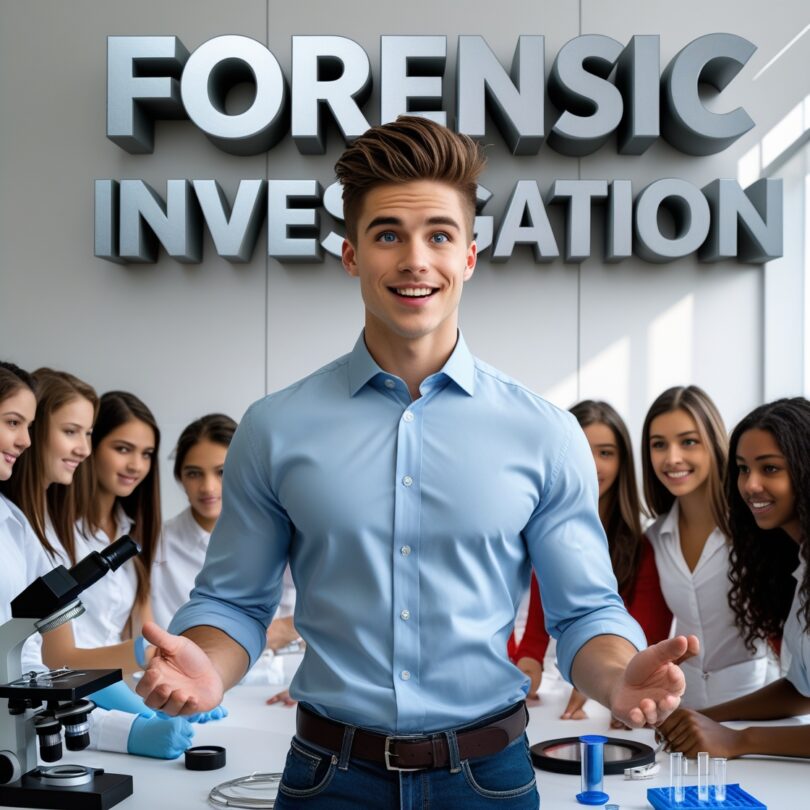Introduction to Forensic Investigations: Unveiling the Science of Solving Mysteries
Forensic science is a fascinating field that plays a crucial role in solving mysteries, often seen in popular TV shows and movies. But what is it really about? Let’s embark on a journey to understand forensic investigations and how they contribute to the justice system with clarity and precision.
What is Forensic Science?
Forensic science is the application of scientific principles and methods to answer questions arising from crime scenes. It involves the collection, preservation, and analysis of physical evidence to provide crucial insights during investigations. Think of it as a scientific detective work that helps piece together the puzzle of an incident.
Key Components of Forensic Investigations
- Crime Scene Examination
The first step in a forensic investigation is securing and examining the scene. Investigators carefully gather evidence such as fingerprints, fibers, and other materials, ensuring that they are preserved for further analysis. The goal is to prevent contamination and maintain the integrity of the evidence.
- Collecting Physical Evidence
Physical evidence is any tangible material related to an incident. This can include anything from shoe prints to trace materials like hair or dust. Collecting this evidence accurately is crucial because it forms the basis of laboratory analyses.
- Laboratory Analysis
Once evidence is collected, it is sent to forensic laboratories equipped with advanced technology and expert professionals. Here, scientists analyze the materials to identify their origins and their links to people or objects involved in the incident. Techniques can include DNA analysis, chemical testing, and examination of microscopic details.
- Interpreting Findings
After analysis, the findings need to be interpreted to piece together events and establish a timeline. Forensic investigators work closely with law enforcement to share insights and offer expert testimony when required during legal proceedings.
Tips for Successful Forensic Investigations
- Attention to Detail: Every small piece of evidence can be significant, so meticulous attention to detail is crucial in all phases of investigation—from collection to analysis.
- Preservation of Evidence: Proper handling and storage of evidence ensure its integrity. Avoid touching or moving objects unnecessarily to prevent contamination.
- Continuous Learning: The field of forensic science evolves rapidly with technological advances. Staying updated with the latest methods and tools is essential to maintain accuracy and efficiency.
- Team Collaboration: Effective communication and cooperation between forensic professionals and law enforcement agencies enhance the investigation process and ensure that all evidence is effectively utilized.
- Photographic Documentation: Always photograph the crime scene thoroughly before collecting any evidence. This visual record helps capture the original state of the scene, providing valuable context for later analysis.
- Chain of Custody: Maintain a clear and detailed record of who handles each piece of evidence and when. This ensures that the integrity of the evidence is preserved from the crime scene to the courtroom.
- Use of Protective Gear: Wearing gloves, masks, and protective clothing helps prevent contamination of evidence. This is crucial for maintaining the purity of samples and ensuring accurate analysis.
- Organized Evidence Collection: Label and organize all collected evidence meticulously. Clearly marked evidence bags or containers prevent confusion and make analysis more efficient and reliable.
- Cross-Disciplinary Collaboration: Forensic investigations often benefit from the expertise of various specialists, including pathologists, chemists, and digital analysts. Collaborating with professionals from diverse fields can provide comprehensive insights and enhance problem-solving.
- Digital Forensics: In today’s digital age, cyber evidence such as emails, databases, and digital footprints can be just as important as physical evidence. Secure and analyze digital devices carefully to aid investigations.
- Ongoing Training: Regular training sessions and workshops help forensic professionals hone their skills and stay updated with emerging technologies and methodologies.
- Ethical Handling: Approach all investigations with transparency and integrity. Ethical considerations are paramount to uphold justice and maintain public trust in forensic practices.
Forensic investigations serve as a bridge between science and justice, helping to uncover the truths hidden within physical evidence. With careful collection and expert analysis, forensic science plays a vital part in solving cases and providing closure to those affected. Whether solving intricate mysteries or presenting evidence in court, the field of forensic science remains an indispensable tool in modern investigations.
By understanding the fundamentals of forensic investigations, you can appreciate the intricate yet methodological approach used to uphold justice and support the legal system.






